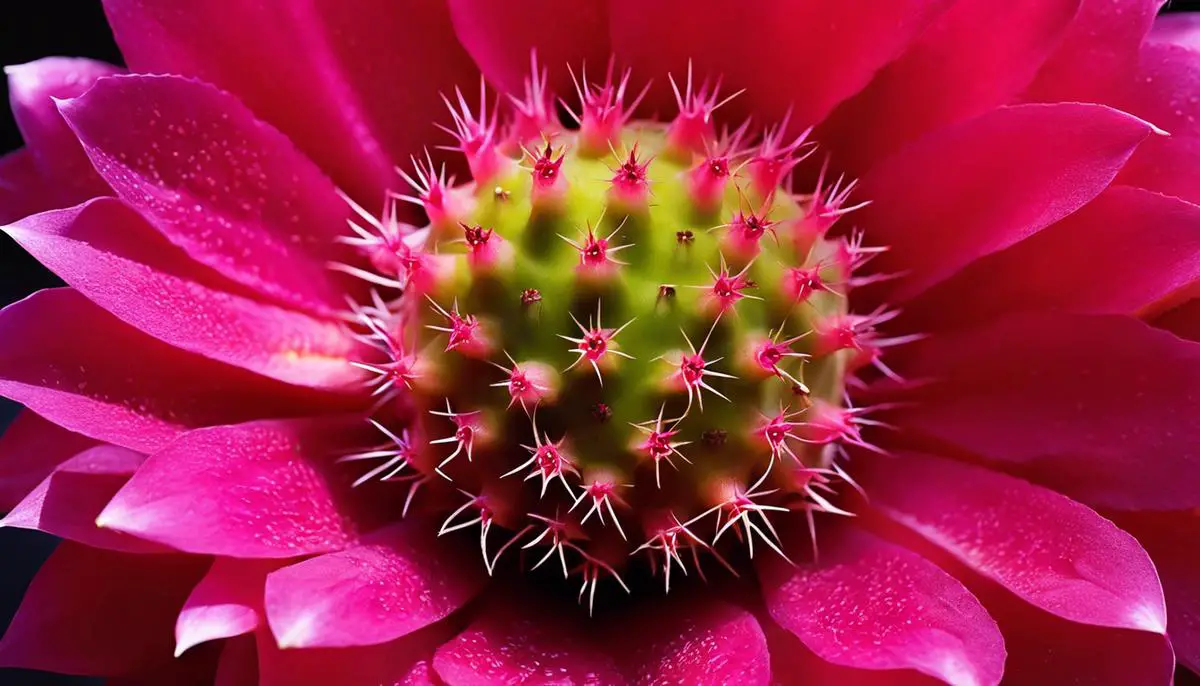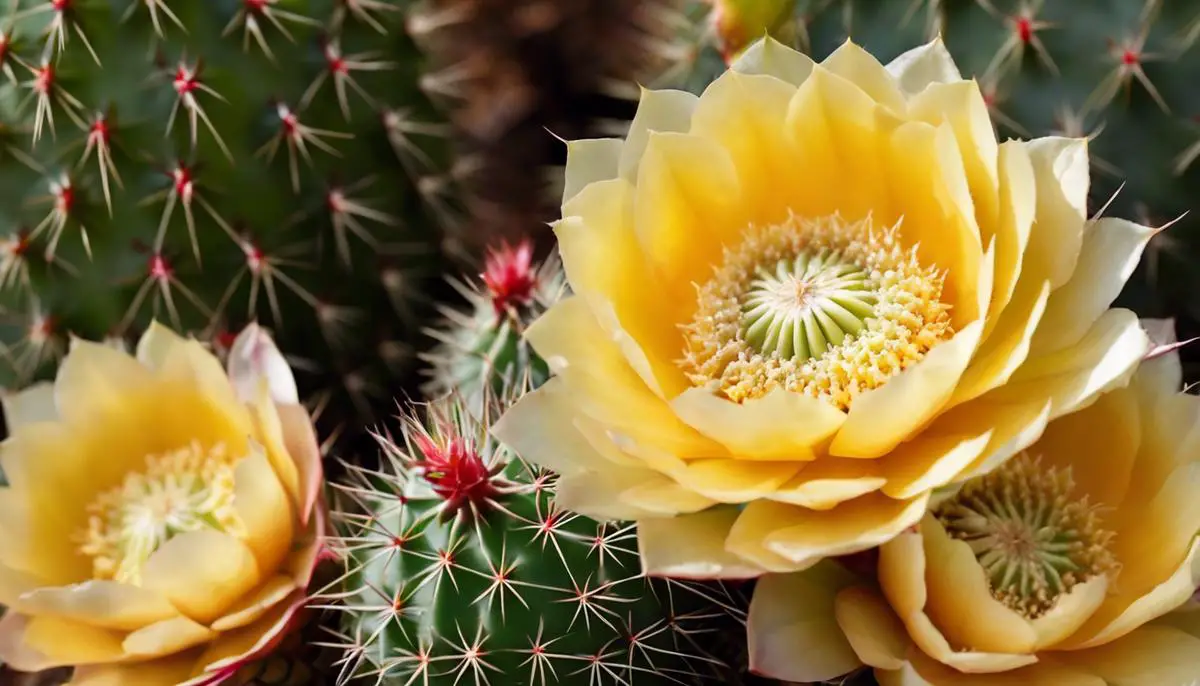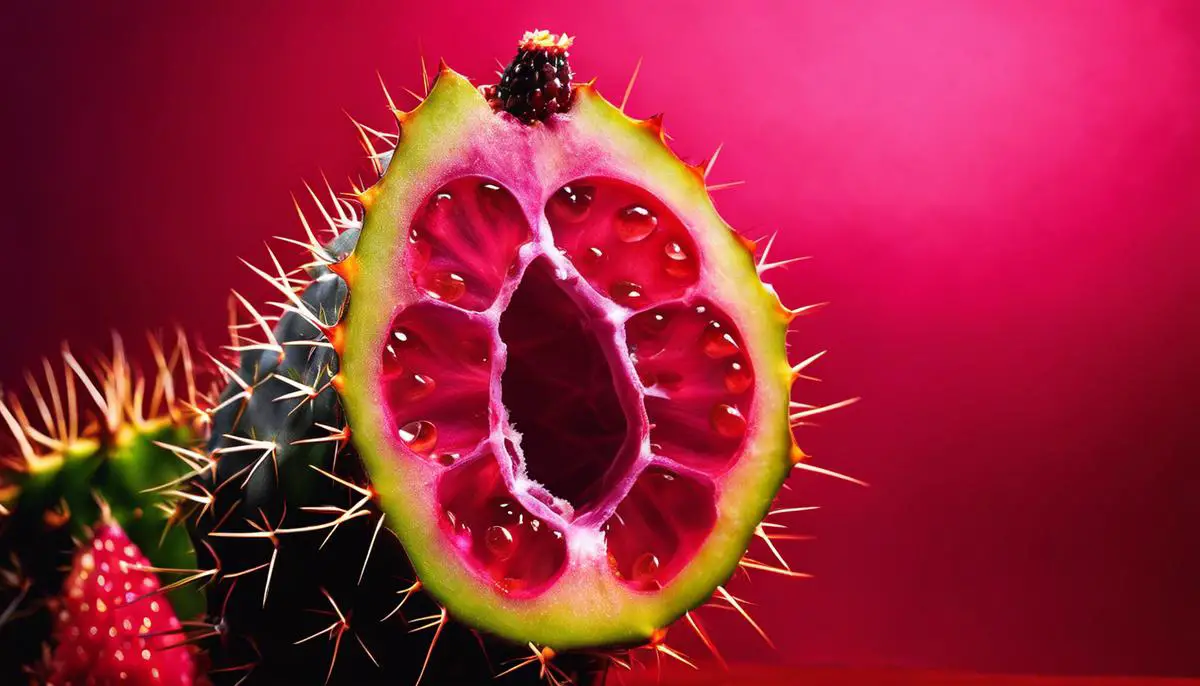
A journey into the world of cactus pears is akin to embarking on an exploration of unchartered exotic flavors. Gifted by nature, ensconced within its tough, prickly exterior, lies a fruit bearing a tantalizing sweetness and a wealth of health benefits. As we delve deeper into understanding the distinct characteristics that set the cactus pear apart, we will uncover its historic roots and how it earned its interesting name. From its unique texture to the vibrant sensory experience it offers, this pear is undeniably a bouquet of surprises. Coupled with guiding you through the aspects of growing this intriguing plant successfully, this informative resource unfolds the multi-faceted dimensions of the cactus pear, a fruit that continues to intrigue and enthrall.
Understanding Cactus Pear
Unleashing the Uniqueness: What Makes the Cactus Pear Stand out Among Other Fruits
In the vast, colorful realm of fruits, the presence of one niche character who continues to fascinate many fruit enthusiasts is undeniably the cactus pear. Also known as prickly pear, this enigmatic fruit is grown on the Nopales cacti, native to the Americas. It’s not your typical pear, apple, or berry – the cactus pear has an identity all its own. The allure stems from various factors, ranging from its distinctive taste and appearance to its resilience and surprising health benefits.
The first reason the cactus pear stands out is because of its unconventional taste profile. It is a sweet, somewhat melon-like flavor, combined with a mild tartness. This stability between sweetness and tartness is a rarity for a fruit, offering a unique taste that leaves a memorable impression on the palate. The flesh of the cactus pear, often ruby red or golden in color, is filled with small, hard seeds that add a pleasant crunch to every bite.
The eye-catching appearance of the cactus pear is another distinguishing feature. Sporting a vibrant exterior, this fruit presents in rich, fiery hues of red, purple, yellow, or green. This vibrant outer layer incidentally hides spiny, tiny glochids that add a distinct touch, making the fruit seem as if it just traveled from a harsh desert environment straight to a fruit bowl.
Adaptability is a unique trait of the cactus pear that sets it apart from the rest of the fruit kingdom. This fruit does not require a tropical or temperate climate to thrive. It’s the proud resident of arid regions, proving its resilience by surviving and even flourishing in harsh desert conditions. This is not common among traditional fruit-bearing plants, giving the cactus pear a rather heroic image.
The cactus pear stands head and shoulders above the rest for its impressive nutritional content too. Unbeknownst to many, this humble desert fruit is packed full of fiber, antioxidants, and vitamin C. It holds a plethora of health benefits that range from reducing cholesterol levels, combating diabetes, promoting gut health, to boosting the immune system. This single fruit holds substantial potential in making a positive impact on overall health, once again elevating its standing amidst popular fruits.
It’s not just the fruit that’s noteworthy — every aspect of it is usable! The cactus leaf or “pad” is edible, and can be grilled or sautéed for a delightful side dish. There are myriad culinary possibilities, making the cactus pear a versatile addition to any kitchen.
So, whether a fruit connoisseur, health enthusiast, or kitchen maestro, the cactus pear is unmistakably a standout. It’s resilient, nutritious, appealing to the eye, and a wellspring of flavor. A love for this fruit often extends beyond its taste, resting solidly on its remarkably multifaceted nature. When compiling an exploration list of unique fruits, the cactus pear undoubtedly earns a top spot. Don’t let the prickly exterior deter you — this is one remarkable fruit well worth the effort!
So, delve in, experiment and indulge. Let the cactus pear become a celebrated character in many a cherished fruit adventure story!

Growing Cactus Pears
Cultivating Cactus Pears: Your Guide to Successful Gardening
Discovering the cactus pear, or prickly pear, extends beyond understanding its unique characteristics and taste profile; it also involves delving into the fascinating world of cultivating these desert delight. An addition of this exotic plant to your home garden not only enhances its visual allure but also offers a perpetual supply of nutrition-packed fruits right at your doorstep. Here’s a beginner’s guide on how to grow your own cactus pears successfully.
Initially, picking the correct species of cactus pear is crucial. The most popular variety for home cultivation is Opuntia ficus-indica, prized for its large, succulent fruit. For optimal results, source your plant from reputable nurseries or online plant dealers. Keep in mind that cactus pears are shipped as rootless cuttings, not seeds, meaning you’ll get a head start since these cuttings root and grow faster than seeds.
Cactus pears are remarkably hardy, perfect for both newbie gardeners and those living in drought-prone areas. The secret to growing these plants successfully lies in emulating their natural desert habitat. Therefore, a loose, well-draining soil mix is essential to prevent water-logging and encourage root health. Gardeners can create their own potting mix using one part potting soil combined with one part coarse sand and a slight addition of perlite or pumice.
When it comes to planting, the period between late spring and early summer is the most conducive for the cactus to settle and grow. For potted plants, select a pot with adequate drainage holes and place the cutting approximately 2 inches deep into the soil. Remember to handle it carefully to avoid the pointed spines.
Contrary to popular belief, cactus pears need regular watering for good growth, particularly during the hot summer days. A good rule of thumb is to deeply water the plant and then allow the soil to totally dry out between watering sessions. Still, caution must be exercised to not over-water since this can lead to root rot.
In terms of temperature, cactus pears thrive best in a temperature range of 50-85°F but can handle temperatures as low as 20°F in winter. Nonetheless, they are susceptible to frost damage, so it’s essential to provide some form of protective insulation during harsh winters or consider bringing potted plants indoors.
One thing to remember is that cactus pears love the sun. To that end, strive to give them a full sun exposure for at least six hours a day. This will help them grow into strong, healthy plants.
Patience is the key trait of a cactus pear gardener as these plants take their time to mature. With the right care, your cactus pear plant will bear fruit in about three to four years post-planting. The wait will certainly be worthwhile when your garden is enriched with the sight of ripe, luscious cactus pears ready to be enjoyed!
In summary, cultivating cactus pears can be a rewarding endeavor for all gardening enthusiasts who crave a taste of the desert right in their backyard. Pay close heed to these tips, and you could be well on your way to cactus pear mastery. After all, there’s nothing better than biting into a home-grown cactus pear knowing that you nurtured it to perfection.
Cactus Pears

Health Benefits of Cactus Pear
Dive deeper into the impressive health benefits that cacti pears present!
While already covering its taste, appearance, adaptability, culinary uses, and general characteristics, the exploration continues into the wondrous world of this quite surprising fruit.
Cactus pear, also referred to as prickly pear or nopal, is not just a pretty staple of arid landscapes. Its bountiful health advantages are shining increasingly brighter in the health and wellness spotlight. Filled with antioxidants, this miraculous plant aids in reducing inflammation, improving digestion and even preventing chronic diseases.
Touting a high content of dietary fiber, cactus pear can aid in digestion by adding the necessary bulk to food to assist in its smooth passage through the digestive system. This also communicates to the brain to release ghrelin, the hunger hormone, which reduces overeating and keeps cravings in check!
Another compelling argument for the embrace of cactus pear is the presence of betalains. In the varied world of antioxidants, betalains make their mark by being potent inflammation busters, effective in mitigating issues from annoying aches and pains to chronic diseases linked to inflammation.
The cactus pear also champions heart health. It’s rich in potassium, an essential mineral that helps regulate blood pressure by balancing out the negative effects of sodium. Flavonoids present in this spiky fruit can further protect heart health by reducing the levels of harmful cholesterol in the body and preventing the formation of blood clots. All of this contributes to a healthy, pumping heart, and makes cactus pear a heart-smart choice.
What’s even more impressive is the evidence emerging on the cactus pear’s potential in managing diabetes. Its high fiber and pectin levels are beneficial in controlling the body’s glucose levels by decreasing the absorption of sugar in the stomach and intestine.
The skin shouldn’t be left out of this conversation, as cactus pear’s application extends to skincare as well. This fruit is abundant in skin-loving vitamin E, nourishing fatty acids, and antioxidant vitamin C, which can help maintain skin elasticity, protect against aging and UV damage, and provide a healthy, hydrated complexion.
When you add it all up, cultivating a cactus pear plant offers not only an opportunity for hobbyists to engage in a sustainable gardening project but also a treasure trove of health benefits, covering everything from digestion to disease prevention. Harness the power of nature in its spikey, unassuming form, because a cactus pear plant is indeed a gift that keeps on giving.

Culinary Uses of Cactus Pear
Picking up where we left off, let’s delve deeper into the intriguing cactus pear, or as some like to call it, the ‘jewel of the desert’. We’ve explored its taste, physical appearance, survival in extreme climates, nutritious goodies it comes packed with, and its place on the culinary table. We’ve also talked about how to get the best species, where to get it, and how to cultivate them. What could we possibly have left to explore? Well, get ready, because there’s still more to this plant than meets the eye.
In the culinary world, cactus pears are not just some exotic fruit to be enjoyed at exclusive establishments. This jewel is extremely versatile and can be a star in your home kitchen too. It’s time to roll up our sleeves and explore the potential of this desert plant beyond her straightforward applications.
Instead of seeing cactus pear as just a fruit, think of it as an ingredient with a multitude of possibilities. These neon-green gems can be transformed into an array of culinary delights. From drool-worthy desserts and nutritious smoothies to savory sauces and exquisite jams, cactus pears can be used in just about anything!
Imagine sipping on a refreshing cactus pear lemonade on a hot summer day, or diving into a bowl of creamy cactus pear gelato. Use the fruit to add a unique spin to traditional salsas or relishes, giving your dishes an unexpected kick of flavor.
An unexpected but delightful application of cactus pear is in salad dressings. Bathe your greens in a cactus pear vinaigrette with just the right balance of sweetness and acidity and get ready for a festival of flavors in your mouth. And as for the folks with a sweet tooth, did you know cactus pears can be converted into a sugary syrup that’s divine drizzled over pancakes or waffles?
Plus, pairing cactus pear with seafood might be the culinary adventure you didn’t know you needed. Picture this – seared scallops with a cactus pear reduction. Sound delectable? It sure is!
A versatile aspect of the cactus pear is, every part of the plant has something valuable to offer. Not just the fruit, even the pads, or nopales as they are commonly called, are a treasured ingredient in Mexican cuisine. They can be grilled, boiled, sautéed or even eaten raw!
In different parts of the world, cactus pears have also been used to make alcoholic beverages. Some breweries have created cactus pear beers and many distilleries have utilized it in their spirits, creating an exclusive and intriguing liquor.
Taking all this into account, it’s clear cactus pears are not just survival food for desert dwellers. They’re a culinary goldmine waiting to be explored, a versatile ingredient that can truly elevate your dining experience. So next time you spot these green beauties, remember, they’re more than just a pretty fruit – they’re a window to a world of culinary adventures.

The cactus pear, a fruit cloaked in mystery and unique charm, is indeed a treasure trove of flavors, nutrition, and opportunities. Its contribution to health and wellness, thanks to its rich fiber content and potent antioxidant properties, place it quite favorably with renowned superfoods. The versatility it brings to both savory and sweet dishes add a delightful twist to culinary exploits. It is hoped that this insight into the cactus pear – its growth, its values, and its enticing uses – inspires you to explore and experience this exotic fruit in your everyday nutritional journey. Let the enticing world of the cactus pear beckon you to a realm of flavors, health benefits, and an exciting cultivation adventure.



